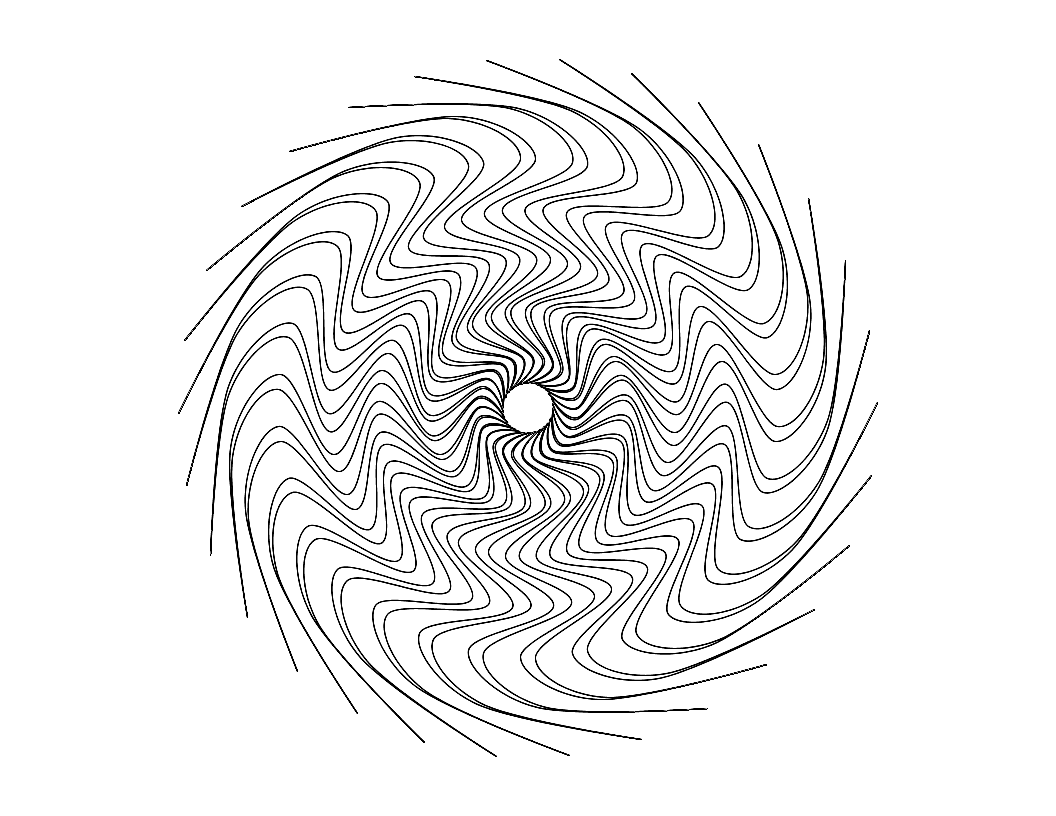
I began with a single curve and moving it in a circle around the center. I then modified the curve to go in and out of the circle to different radii. Next I flipped the in and out movement to be a back and forth movement. Lastly, I added some twist to every other point and exaggerated these twists and extensions.
This assignment pushed my ability to completely understand my code as I was writing it. When I hit a happy accident, I made sure to really think through how my change had affected the output.
/*
* sapeck_LineWalk.pde
* A drawing consisting of a single continuous line
* Originally created by sapeck 2021-09-07
* CMU 60-428 F21 Drawing With Machines
*/
import processing.svg.*;
float[] radii = { .5, 1, 2, 3, 4, 5, 6, 7, 6, 5, 4, 3, 2, 1 };
int MULTIPLIER = 30;
int OUTER = 10;
int OUTER_TWIST = 50;
int DIVISIONS = radii.length * MULTIPLIER;
int SMALLER_COORD = min(width, height);
void setup() {
size(1056, 816); // Letter: 11"x8.5" at 96 DPI.
noLoop();
}
void draw() {
background(255);
beginRecord(SVG, "sapeck-LineWalk.svg");
stroke(0);
noFill(); // Don't create duplicate shapes!
beginShape();
int current_radius = 0;
for (int i = 0; i < (2*DIVISIONS)+3; i++) {
float radius = OUTER;
if (i % 2 == 0) radius = radii[current_radius];
float offset = 0;
if (radius != OUTER) offset -= ((OUTER - radii[current_radius])/max(radii)) * MULTIPLIER*2*PI/DIVISIONS;
float theta = i*2*PI/DIVISIONS + offset;
float scale =(radii[current_radius]*SMALLER_COORD/2);
if (radii[current_radius] == max(radii)) theta -= OUTER_TWIST*2*PI/DIVISIONS;
float x = width/2 - scale*cos(theta);
float y = height/2 - scale*sin(theta);
curveVertex(x, y);
current_radius++;
if (current_radius == radii.length) current_radius = 0;
}
endShape(CLOSE);
endRecord();
saveFrame("sapeck-LineWalk.png");
}